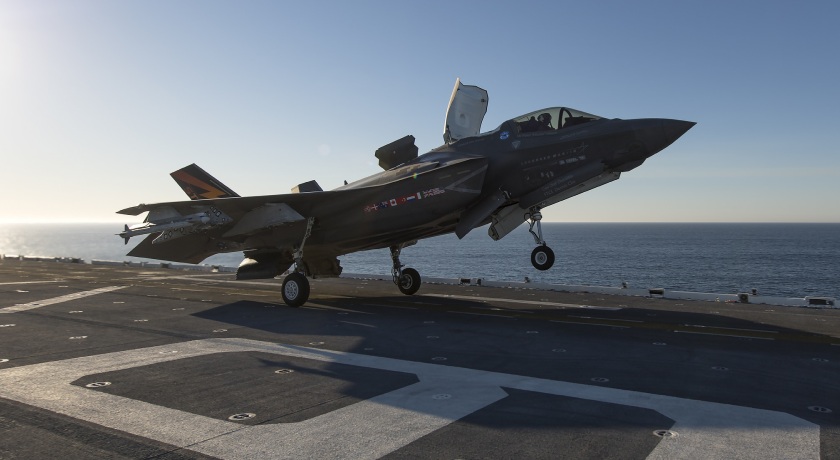Australia needs to re-evaluate its position and pursuit of modern maritime-based power projection capabilities, including fixed-wing naval aviation in light of growing challenges to the nation’s economic and strategic interests in the Indo-Pacific region, writes former naval officer Richard Hobbs.
To continue reading the rest of this article, please log in.
Create free account to get unlimited news articles and more!
"Like Australia, Japan is dependent upon unrestricted access to critical sea lines of communication (SLOC), which require robust naval and air power capabilities – these developments and the strategic reorientation provides avenues for the two nations to develop similar, complimentary force structures to ensure unhindered access to the Indo-Pacific Asia’s SLOC." – Defence Connect, Stephen Kuper, 7 May 2019.
The SLOCs of Japan and Australia are surprisingly similar. There are of course notable differences:
- The relative percentages of tonnage using the individual routes;
- Routes from the Middle East that pass close to, or south of, Cocos Islands;
- Australia has additional maritime responsibilities in the south-west Pacific that stretch resources; and
- The extent of the Australian continent and offshore territories is significantly more extensive than the entire Japanese island chain.
Worldwide there is an increasing number of large deck ships, including notable additions such as the Royal Navy’s Queen Elizabeth and Prince of Wales while in the US the Gerald R Ford is the lead ship of a class of nuclear super-carriers, even while the USN and Congress grapple with funding the purchase of two more carriers without losing the Harry S Truman in the process.
Regionally, China is now well advanced on its third carrier and the scuttlebutt is they are targeting six by 2030. India is there too, and if the media reports are to be believed, they will be basing their next design on the UK Queen Elizabeth Class.
Japan has recognised the need to boost power projection capabilities of the JMSDF and JASDF by modifying Izumo and sister ship Kaga to embark F-35B and, it is mooted, the smaller Hyuga and Ise might be similarly modified. To go to those extremes the Japanese government has to be seriously concerned about the current situation.
Australia has a program to replace current capability – the term rearmament has been erroneously used in some quarters. Three questions remain for Australia:
- Is this sufficient?
- Is the timeline correct? and
- Are we already within our warning time?
This article only addresses one aspect of the sufficiency issue – naval aviation.
Australia, like Japan, has to extend its reach over vast distances. Continental Australia is greater east-west than the Japanese island chain north-south and doubles from Norfolk Island to Cocos Island.
The six (originally 10 were envisioned) Collins Class submarines provide only a very limited long-range anti-shipping strike capability and the RAAF’s F-35A aircraft will be range-limited without tanker support, but even that has its own limitations.
This does not in any way decry the fantastic capabilities of this fifth-generation aircraft but nonetheless Australia has no realistic strike capability more than a few hundred miles offshore and covering only a small percentage of its SLOCs.
There will be an additional problem when Australia’s capital ships operate in the role of an Amphibious Readiness Group (ARG). The RAAF will be unable to secure the airspace without the acquiescence of other sovereign countries, a level of cooperation they might be willing to give but are pressured to refuse.
To optimise ADF resources the integrated force concept has been introduced, but when that concept has been fully exploited the issue of range or distance from Australian sovereign bases will still remain. There is a clear need for sovereign air power in the form of naval fixed-wing aviation.
It is a while since there was any public discussion about placing F-35B on HMA Ships Adelaide and Canberra – a role for which these ships were of course designed, though not fully constructed.
It is time for this issue to be revisited but firstly it must be made clear that the jealousies, prejudices and (heaven forbid) inter-service rivalries of the past should not be allowed to distort the debate. That triad is the real elephant in the room. Strategic realities dictate that naval fixed-wing aviation, complementary to RAAF capability, must be reintroduced to the RAN.
There is a current parallel debate about unmanned combat aerial vehicles (UCAV). Both the RAN and RAAF are introducing a variety of drones or UAVs into service. UCAV must also be considered, if this can be done without over-complicating the unmanned scene. At this juncture, it seems that the selection of suitable launch and recovery platforms for UCAV will be the principle determinant.
The basic design for HMA Ships Adelaide and Canberra (the Spanish Juan Carlos 1) allowed for 10 or 12 F-35B as well as helicopters. How such aircraft would be deployed, on which ships and their operating bases, is best left for another day. The principle to be established is that without naval aviation Australia does not have a full tool-kit of weapons to deliver lethal force and the ADF is being deprived of a significant measure of flexibility.
Aircraft carriers and naval aviation exert enormous strategic clout. They are the airfield over the horizon. They add range and have persistence. They create uncertainty in the minds of our enemies.
Japan has now openly declared its hand and to (mis)quote a well-known advertisement ‘Come on Australia, where the hell are you?’
Richard Hobbs is a former naval warfare officer who served in both the Royal Navy and Royal Australian Navy including time in Strategy Group and Future Warfighting. He has also been a private consultant on maritime affairs.

 Login
Login







